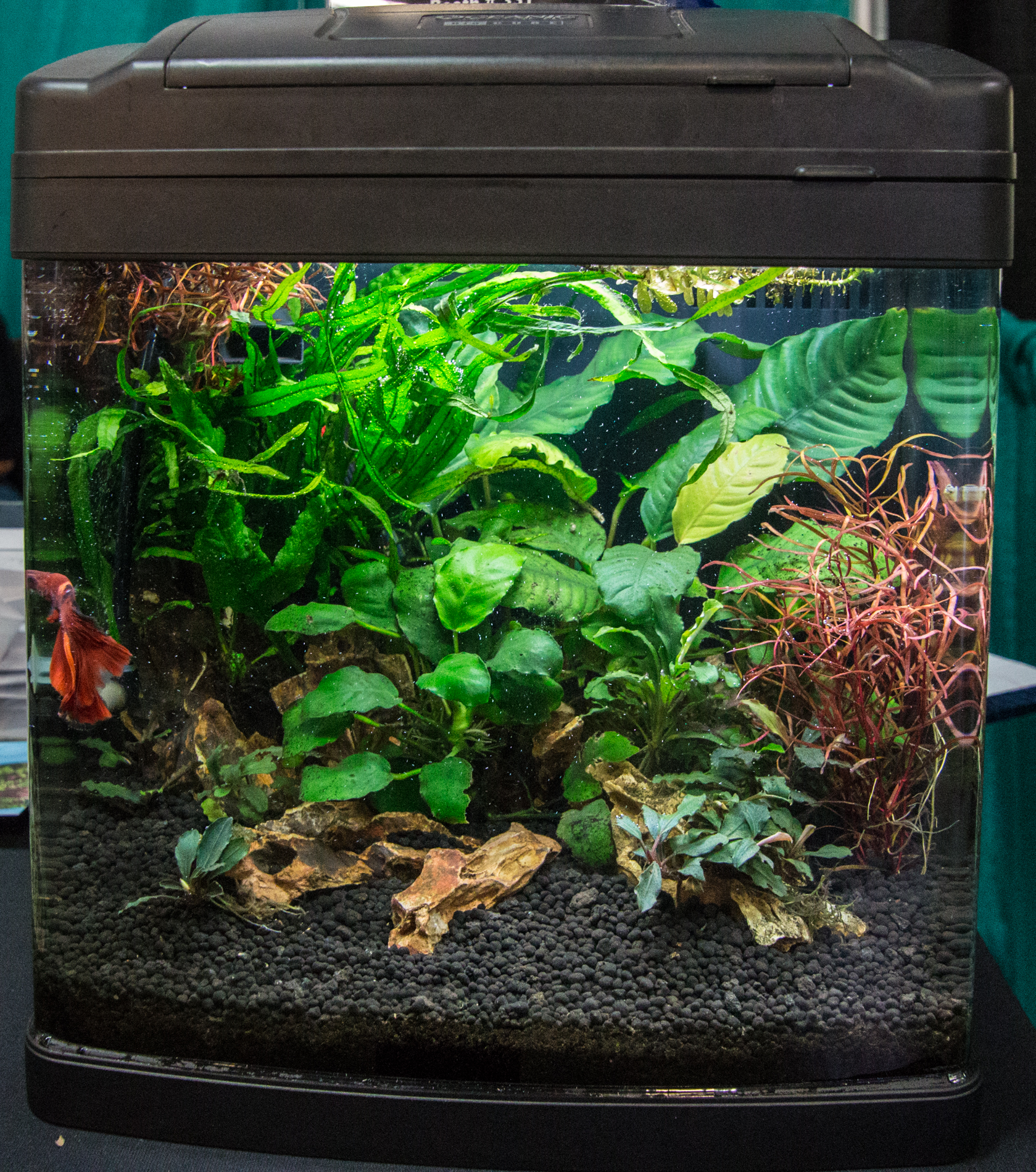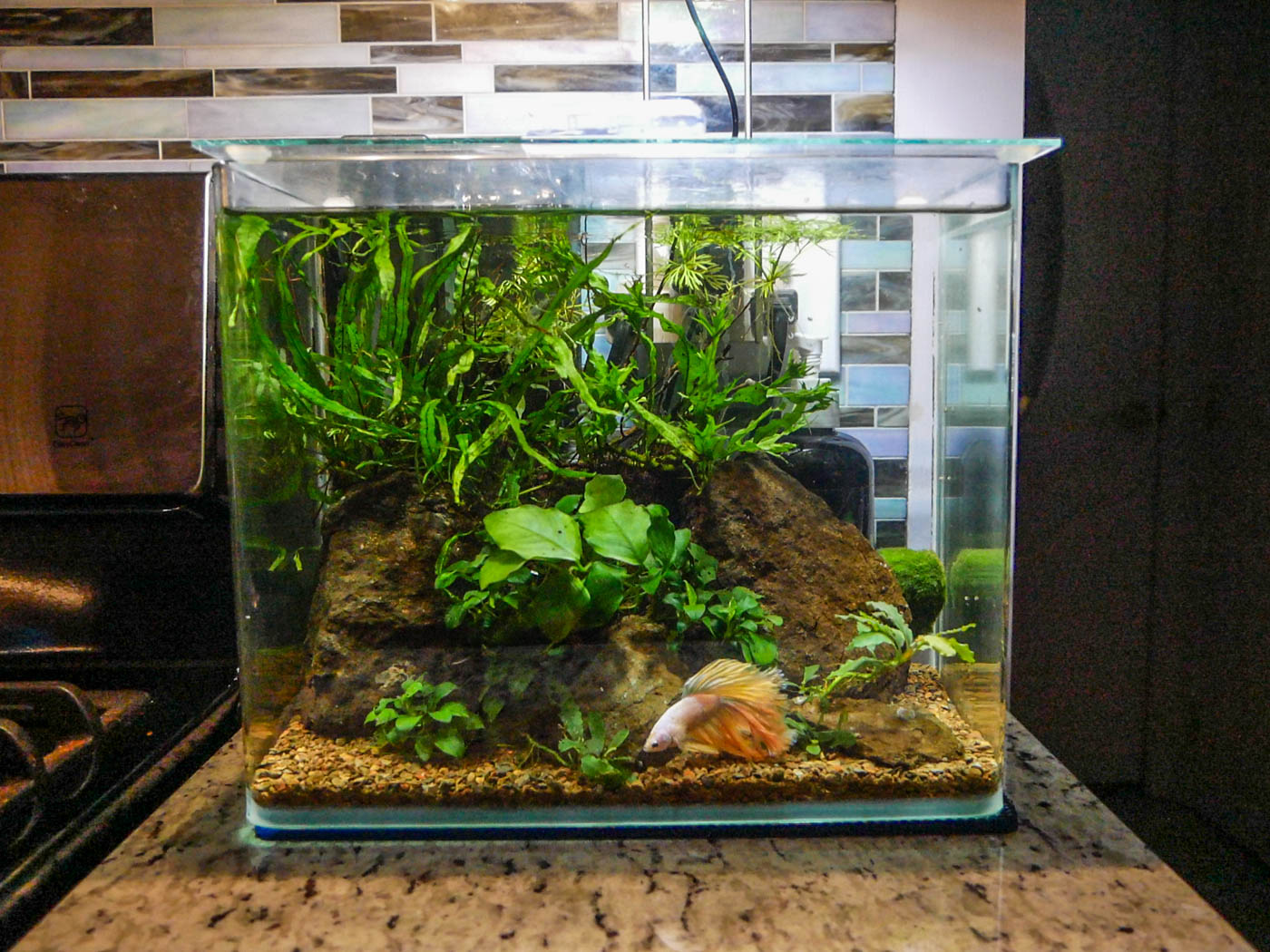I first wrote this column in April of 2017. But there were some things that needed to be clarified, and although it seemed like “old news” to me then, and older news to me now, the subject comes up over and over. So I have re-worded a few things that people found confusing, and have more generally spoken about “commercial liquid carbon supplents”, since Excel is no longer the only game in town. They are all bad news as far as I’m concerned. But as long as people keep buying them, companies will continue to fill that market niche.
"Liquid CO2 Myth"
First there IS no “liquid CO2" at normal air pressure and temperatures. If it’s in a plastic bottle on your shelf, it is NOT carbon dioxide. Carbon dioxide is ONLY liquid if it is under high pressure, as in a CO2 tank from a gas supply company.
Next, there is the recent practice of using generic glutaraldehyde rather than commercial aquarium products. This is even riskier business, because it is even MORE concentrated. Read OSHA's safety requirements and ask yourself whether aquarists are handling it this carefully: https://www.osha.gov/Publications/glutaraldehyde.pdf Then, if you can wade through it, read this study on exposure in rats and mice. Not pretty: http://ntp.niehs.nih.gov/ntp/htdocs/lt_rpts/tr490.pdf
That's why I am adamantly against people using glutaraldehyde. The risks are just too high. This is a known neurotoxin, and every exposure makes adverse effects more likely.
Glutaraldehyde is a biocide. It is used to kill virulent germs in hospital settings. It will kill Eboli. In very small doses, it works as an algaecide, which kills some or all of the microscopic film of algae that grows on plants kept under less than ideal conditions. (if you don't believe this happens, look at a leaf under a microscope sometime) This in turn allows the plant, itself, better access to the nutrients and CO2 that are already available within the system. So plants SOMETIMES benefit from glutaraldehyde products, including those commercial products such as Excel under some (less than optimal) circumstances, but not for the reasons stated on the bottle.
Using glutaraldehyde or commercial “liquid carbon” products as a “carbon source” also just plain doesn’t work. While glutaraldehyde does contain a minimal amount of carbon, using a standard dose, it releases 2.2 ppm of carbon over the first ten hours. So if the rate of dissolution were linear (which it isn't) this would only release 0.2 ppm per hour. Atmospheric equilibrium from gaseous exchange provides 3-5 ppm of CO2 at pretty much all times. So that means that doing absolutely nothing provides 15-25× more CO2 than "liquid carbon". All just by providing good circulation in your tank.
If you can't or choose not to provide a source of supplemental CO2 in your tank, it is perfectly possible to run a beautiful, low light planted tank without, and without resorting to these chemicals. It is a matter of balancing the light source with the amount of CO2 available within the system, and choosing plants properly.
Above is a 75 gallon tank of the author’s run without supplemental CO2. Below are three of the author’s nano tanks, also run without supplemental CO2 and without “Liquid carbon” (glutaraldehyde).
If you must use a commercial “liquid carbon” product. Understand what you are really doing… killing algae, hopefully without killing higher plants or fish, or harming yourself. But please stick to commercially available products, use in a well-ventilated area, do not get the bottle near your face, and do not get it on your skin or in your eyes. If you do, make sure to flush immediately and thoroughly in running water. If you develop a rash or respiratory symptoms, contact your doctor immediately.
I have problems with how people use these products, (at larger than manufacturer recommended doses, which they never suggested) and problems with misinformed people who insist on calling it "Liquid CO2". My biggest problem, though, is the serious, documented health concerns for people who buy and use generic glutaraldehyde just because it's less expensive, and suggest that others do the same, without significant warnings on how to handle a dangerous chemical safely.
After I wrote the above on Face Book, Gary Lange wrote this response:
"I guess I missed this thread the first time around and saw it in Cheryl's "March Clippings". (a member’s only newsletter for the Aquatic Gardeners Association) It's one of my pet peeves, the ignorance of using glutaraldehyde and then thinking it's the same thing as Excel. Excel is a crossed linked group of glutaraldehyde molecules so it is not nearly as reactive as unlinked material, it only has a few "active" sites. However there most likely are still uncrossed-linked molecules in the solution. The fact that some types of fish die from it suggests that.
Saying that glutaraldehyde is just like Excel is really like saying a solution of 20 of the known amino acids is just like insulin. Insulin is a cross-linked protein chain consisting of amino acids and no way will you get the same effect with a bunch of amino acids in solution. Whoever made the leap from Excel being equal to glutaraldehyde in the first place needs a really hardy "Gibbs slap" (for all of the NCIS fans) on the back of the head!
In the biochemistry lab we use glutaraldehyde to cross-link small molecules that we can't make antibodies to with larger molecules. A reactive glutaraldehyde molecule will do this. When our solution gets too old or some goober in the lab doesn't tighten the lid it eventually reacts with air and then cross-links, it's a slow process in that manner. When you inhale small amounts of glutaraldehyde it cross links your lung tissue. We also use formaldehyde for these sorts of fixing processes and everyone is pretty aware of how dangerous formaldehyde is or they should be.
Now the other problem is when you get active material on your skin it can be absorbed and start cross-linking some of your proteins in your skin. Probably not good but most of the time your body just does the repair work and moves on. But you COULD cause a problem where your body no longer recognizes this cross-linked protein and now decides it's a foreign host. This could lead to an autoimmune response. If you dig Lupus, go for it. As someone who worked with glutaraldehyde for years in the lab and handled it VERY cautiously (in a fume hood) I think there isn't anything dumber than using glutaraldehyde in your aquarium. I think you would be better using a broken heater instead, at least you would get the instant feedback!"
So. My very strong advice is to avoid ALL of these products. There are better ways to manage algae, and it just plain doesn’t work as a “carbon source”. If you feel that your health and that of everything in your tank is worth the risk, use a commercial product, not generic glutaraldehyde. And I don’t want to hear, “Well I use it all the time, and everything is fine!”. It takes years of smoking to get lung cancer too. Health effects are cumulative. No, it is not likely that you will keel over the first time you use it, though depending on the fish and plants you are keeping, they might.


